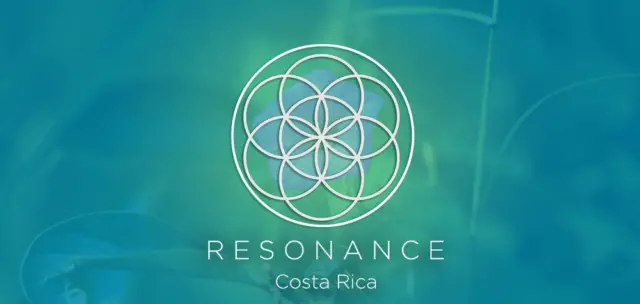Suicide is a global public health issue, and Costa Rica is no exception. While the country is often celebrated for its “Pura Vida” lifestyle—emphasizing happiness and well-being—mental health struggles, including suicidal ideation, affect many individuals and families. In recent years, Costa Rica has seen a troubling rise in suicide rates, prompting government agencies, NGOs, and communities to take action.
**Understanding Suicide in Costa Rica: Key Statistics**
– Costa Rica’s suicide rate has **increased by nearly 30% over the past decade** (Ministry of Health, 2023).
– **Men account for over 80% of suicide deaths**, with the highest rates among those aged 15–44.
– **Hanging and pesticide poisoning** are the most common methods.
– Provinces with the highest rates include **San José, Alajuela, and Limón**, where economic stress and social isolation are significant factors.
These numbers highlight the urgent need for **better mental health support, crisis intervention, and community-based prevention programs**.
**Risk Factors for Suicide in Costa Rica**
Several factors contribute to suicidal behavior in Costa Rica:
**1. Mental Health Stigma**
Despite progress, many Costa Ricans still view mental illness as a **personal weakness rather than a medical condition**, discouraging people from seeking help.
**2. Economic Stress & Unemployment**
Financial instability, especially in rural areas, leads to **hopelessness and despair**. The COVID-19 pandemic worsened job losses, increasing suicide risk.
**3. Substance Abuse**
Alcohol and drug dependency **heighten impulsivity and depression**, making individuals more vulnerable to self-harm.
**4. Social Isolation**
Elderly populations and LGBTQ+ individuals often face **loneliness and discrimination**, increasing suicide risk.
**5. Access to Lethal Means**
Pesticides and firearms are **widely available in rural areas**, contributing to higher suicide completion rates.
**Suicide Prevention Efforts in Costa Rica**
Costa Rica has implemented several **national and community-based strategies** to combat suicide.
**1. Government & Public Health Initiatives**
– **National Suicide Prevention Plan (2020–2025)** – A multi-sector approach involving the Ministry of Health, education, and law enforcement.
– **Mental Health Law (No. 10,066)** – Guarantees access to mental health care and crisis support.
– **Restricting Pesticides** – Regulations on highly toxic chemicals to reduce suicide by poisoning.
**2. Crisis Hotlines & Mental Health Services**
– **911 Emergency Line** – Now includes mental health crisis response.
– **ANAD (National Association Against Depression & Suicide)** – Offers **free counseling and support groups**.
– **IAFA (Institute on Alcoholism & Drug Addiction)** – Provides addiction treatment and suicide prevention programs.
**3. School & Workplace Programs**
– **Mental health education** in schools to teach coping skills and emotional resilience.
– **Employee wellness programs** to reduce workplace stress and burnout.
**4. Community & NGO Efforts**
– **Fundación Ser y Crecer** – Runs suicide prevention workshops in marginalized communities.
– **Telepsychology Services** – Free or low-cost virtual therapy for those in remote areas.
**How to Help Someone at Risk**
Recognizing **warning signs** and knowing how to respond can save lives.
**Warning Signs of Suicide Risk**
– Talking about **wanting to die or feeling hopeless**.
– Increased **alcohol/drug use**.
– **Withdrawing** from friends and family.
– Extreme **mood swings** (anger, sadness, recklessness).
– Giving away **possessions** or saying **goodbyes**.
### **What You Can Do**
1. **Ask Directly** – “Are you thinking about suicide?” (This does NOT increase risk.)
2. **Listen Without Judgment** – Avoid dismissive phrases like “Just cheer up.”
3. **Stay With Them** – Do not leave them alone if they are in immediate danger.
4. **Connect Them to Help** – Call a crisis hotline or accompany them to a mental health professional.
5. **Follow Up** – Check in regularly to show support.
**Barriers to Suicide Prevention in Costa Rica**
Despite progress, challenges remain:
– **Limited mental health funding** – Many clinics are understaffed.
– **Rural access gaps** – Remote areas lack crisis services.
– **Cultural stigma** – Many still avoid discussing mental health.
To overcome these barriers, **more investment in mental health infrastructure, public awareness campaigns, and community training** is needed.
**Hope for the Future**
Costa Rica has made **significant strides** in suicide prevention, but there is still work to be done. By:
– **Normalizing mental health conversations**
– **Expanding crisis intervention programs**
– **Supporting at-risk groups (LGBTQ+, Indigenous communities, elderly)**
We can reduce suicide rates and ensure that no one suffers in silence.
**Suicide Prevention Resources in Costa Rica**
If you or someone you know is struggling:
– **Emergency Line:** **911** (now includes mental health crisis response)
– **ANAD Suicide Prevention Hotline:** **2272-3777**
– **IAFA (Addiction & Mental Health Support):** **2224-6122**
– **PANIAMOR Foundation (Youth Support):** **2215-2969**
**You are not alone. Help is available.**
Suicide prevention is a **collective responsibility**. Through **awareness, education, and compassionate action**, Costa Rica can build a society where mental health is prioritized, and lives are saved.
**If you or someone you love is in crisis, reach out today. Your voice matters.**
**Pura Vida means valuing every life.**

